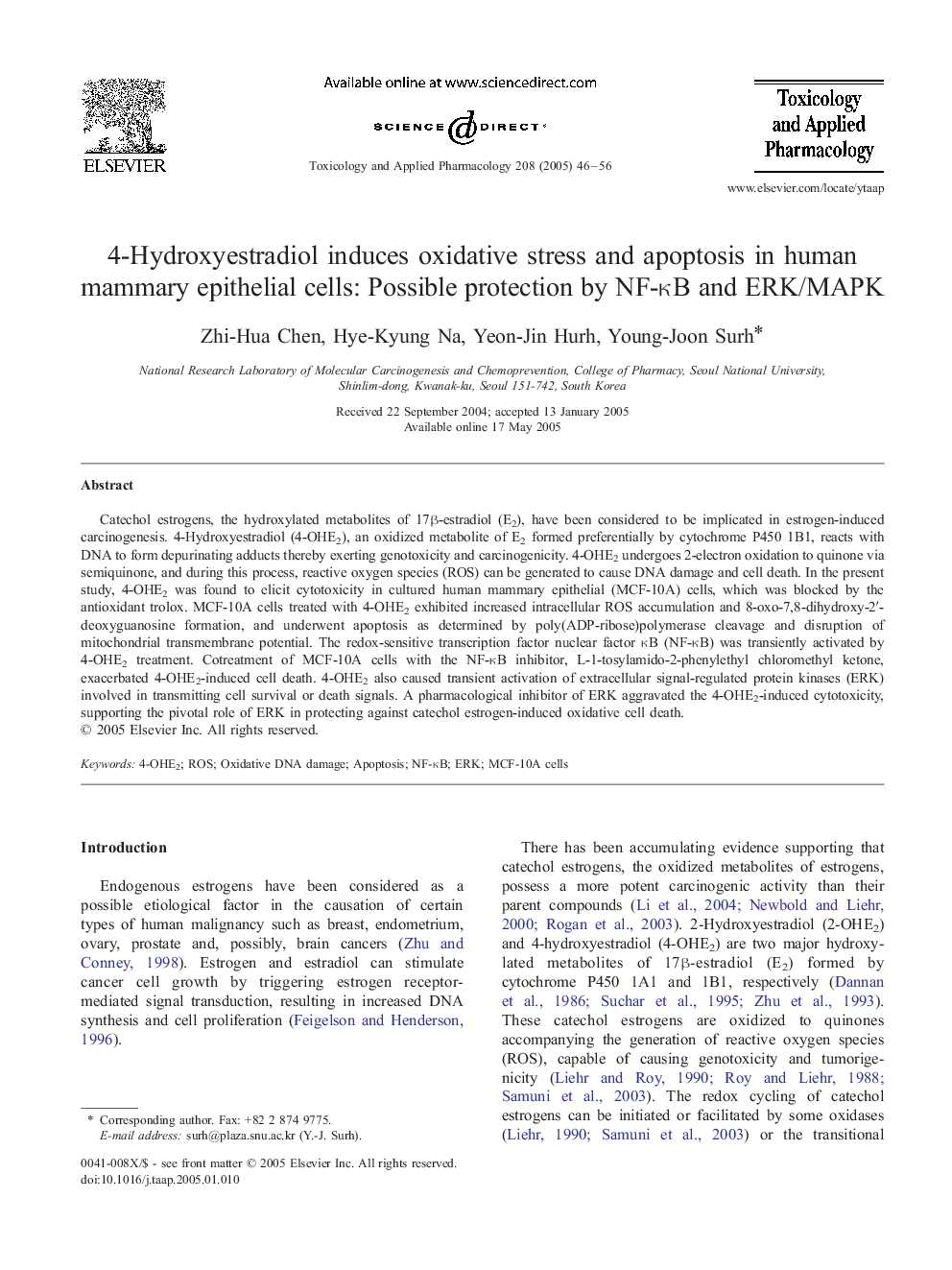| Article ID | Journal | Published Year | Pages | File Type |
|---|---|---|---|---|
| 9017849 | Toxicology and Applied Pharmacology | 2005 | 11 Pages |
Abstract
Catechol estrogens, the hydroxylated metabolites of 17β-estradiol (E2), have been considered to be implicated in estrogen-induced carcinogenesis. 4-Hydroxyestradiol (4-OHE2), an oxidized metabolite of E2 formed preferentially by cytochrome P450 1B1, reacts with DNA to form depurinating adducts thereby exerting genotoxicity and carcinogenicity. 4-OHE2 undergoes 2-electron oxidation to quinone via semiquinone, and during this process, reactive oxygen species (ROS) can be generated to cause DNA damage and cell death. In the present study, 4-OHE2 was found to elicit cytotoxicity in cultured human mammary epithelial (MCF-10A) cells, which was blocked by the antioxidant trolox. MCF-10A cells treated with 4-OHE2 exhibited increased intracellular ROS accumulation and 8-oxo-7,8-dihydroxy-2â²-deoxyguanosine formation, and underwent apoptosis as determined by poly(ADP-ribose)polymerase cleavage and disruption of mitochondrial transmembrane potential. The redox-sensitive transcription factor nuclear factor κB (NF-κB) was transiently activated by 4-OHE2 treatment. Cotreatment of MCF-10A cells with the NF-κB inhibitor, L-1-tosylamido-2-phenylethyl chloromethyl ketone, exacerbated 4-OHE2-induced cell death. 4-OHE2 also caused transient activation of extracellular signal-regulated protein kinases (ERK) involved in transmitting cell survival or death signals. A pharmacological inhibitor of ERK aggravated the 4-OHE2-induced cytotoxicity, supporting the pivotal role of ERK in protecting against catechol estrogen-induced oxidative cell death.
Related Topics
Life Sciences
Environmental Science
Health, Toxicology and Mutagenesis
Authors
Zhi-Hua Chen, Hye-Kyung Na, Yeon-Jin Hurh, Young-Joon Surh,
